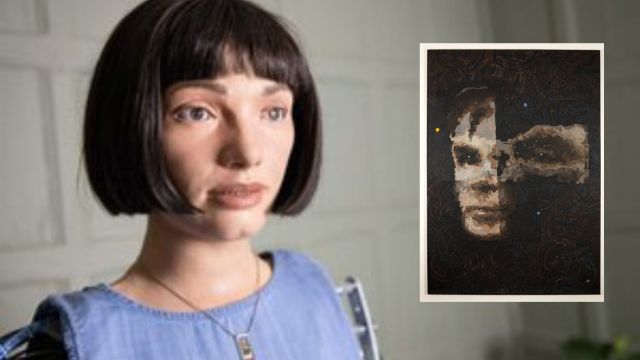Meet Ai-Da, the humanoid robot whose painting of Alan Turing sold for over Rs 9 crore
Ai-Da is capable of drawing and painting using cameras in her eyes, AI algorithms, and her robotic arm.
 Ai-Da's Turing portrait features “muted tones and broken facial planes." (Image: Ai-Darobot.com)
Ai-Da's Turing portrait features “muted tones and broken facial planes." (Image: Ai-Darobot.com)A portrait of Alan Turing, considered one of the fathers of Artificial Intelligence (AI), fetched over a million dollars at a recent art auction. The catch? It was painted by Ai-Da, the world’s first humanoid robot artist.
Fittingly named ‘A.I God’, the piece depicting the famous British mathematician was sold for a whopping $1,084,800 (Rs 9.15 crore, approximately) at Sotheby’s Digital Art Sale, far exceeding the organisers’ initial estimates of $180,000 (Rs 1.5 crore, approximately.)
The painting, which depicts Turing as the god of AI, received a total of 27 bids and was eventually sold to an anonymous buyer in the US, according to a report by The New York Times.
What do we know about Ai-Da?
Ai-Da has been named after Ada Lovelace, a 19th century mathematician acknowledged as the world’s first computer programmer. The humanoid robot was developed in 2019 by Aidan Meller, a former gallery owner and expert at modern art, along with a team of 30 people, including AI researchers from Oxford and Birmingham universities in the UK.
The humanoid has been designed with facial features that resemble a human woman and sports a bob haircut of brown hair. “She is capable of drawing and painting using cameras in her eyes, AI algorithms, and her robotic arm,” the humanoid’s official website reads.
Ai-Da’s creator Meller said that he prompted the humanoid to paint something for an AI conference organised by the United Nations. The robot responded by suggesting a portrait of Turing, known to have predicted the power of AI back in the 1950s.
How did Ai-Da create the portrait?
Coming to the actual painting of the portrait, Ai-Da first analysed one of Turing’s photos and reportedly made around 15 different paintings of various parts of his face. Three of those portraits as well as a painting of a decryption machine used by Turing were then scanned and uploaded to a computer. Ai-Da’s underlying language model was used to put together a single painting and printed out using a 3-D textured printer.
The Times report stated that studio assistants were involved in putting the portrait on canvas. Additional marks and textures to the portrait were made by Ai-Da, it said.
“It is about the transferral of agency onto these machines […] The artwork is saying that we are going into a period where we ask algorithms about what partner we want, what job we want, even what babies we want,” Meller was quoted as saying.







